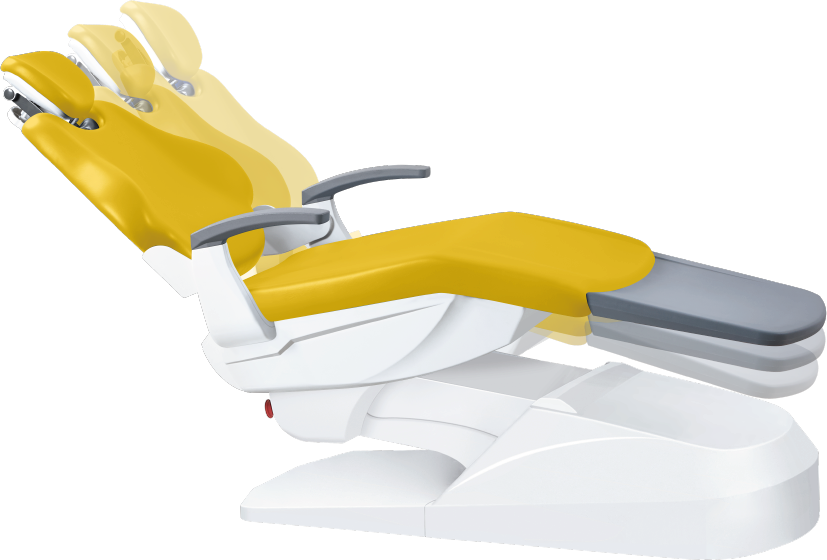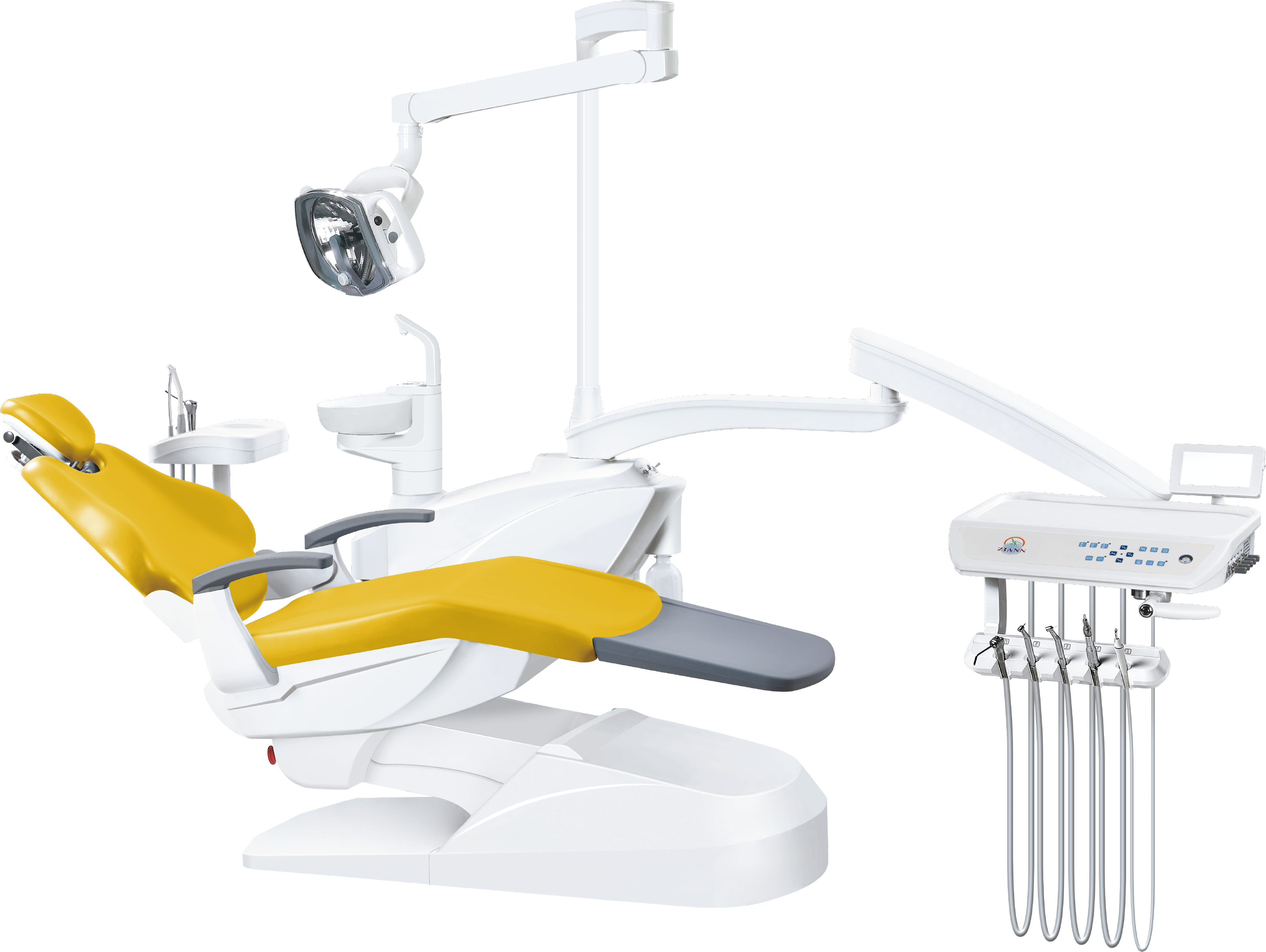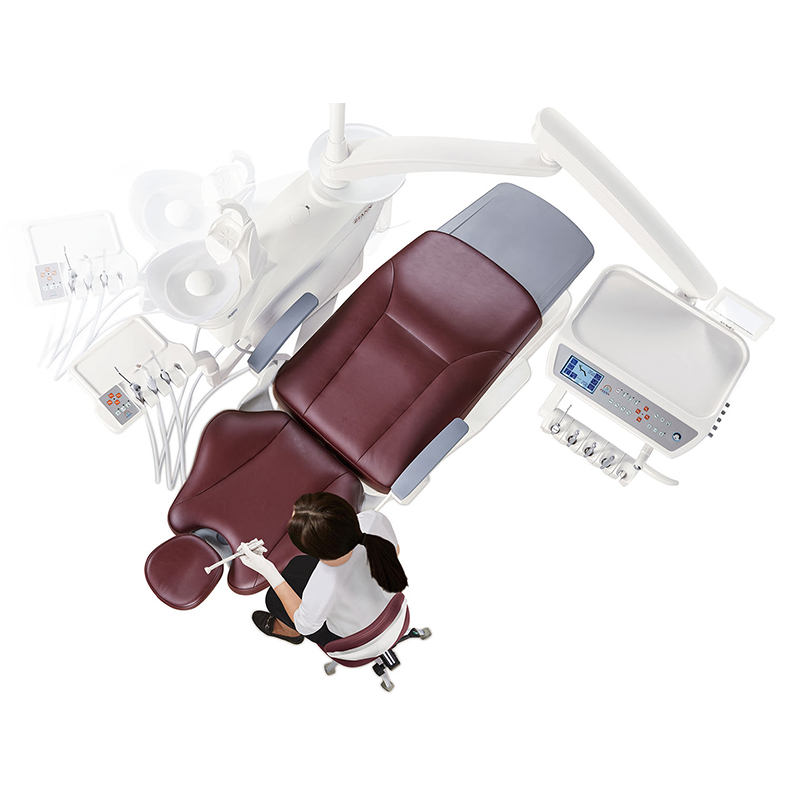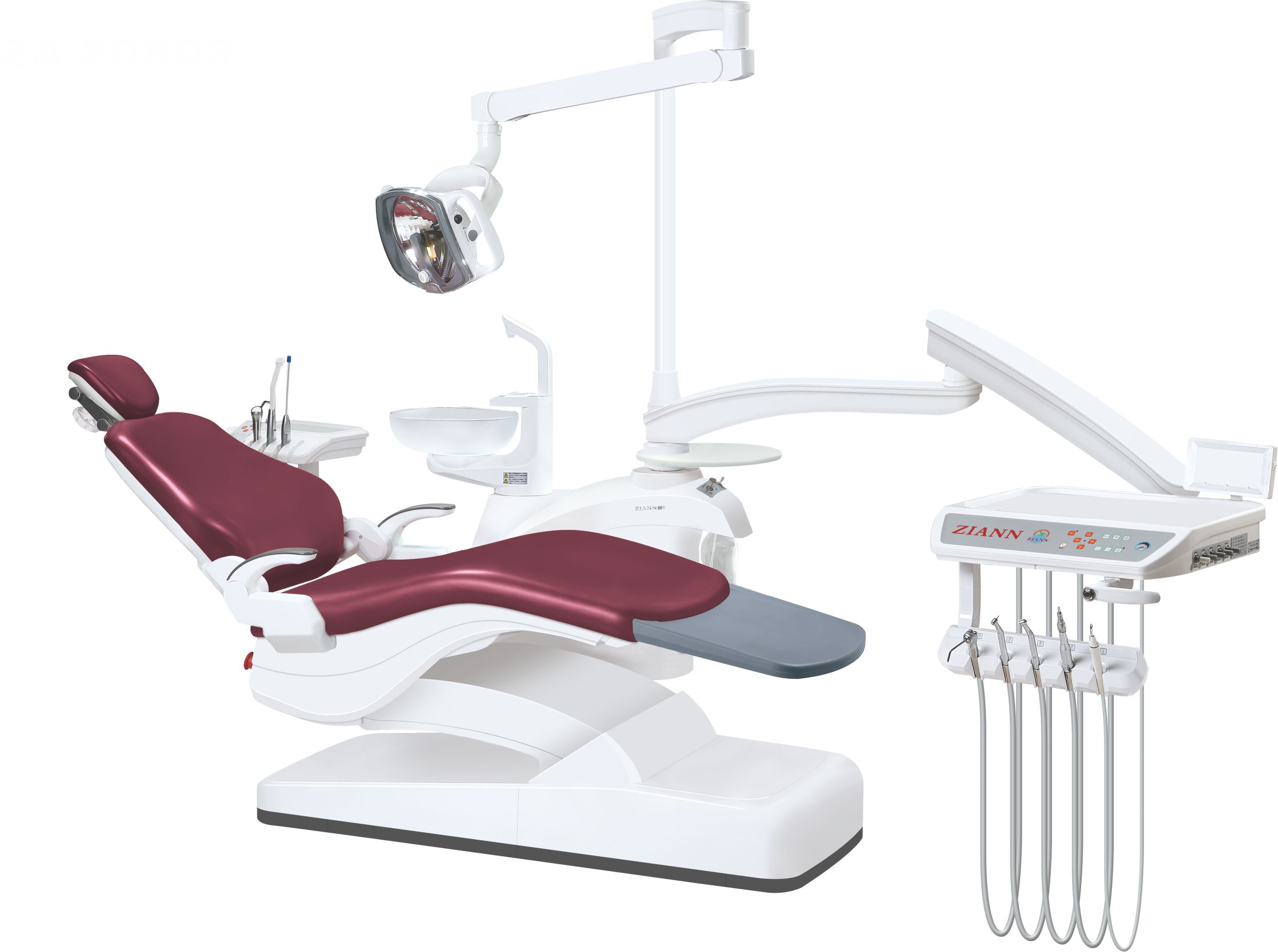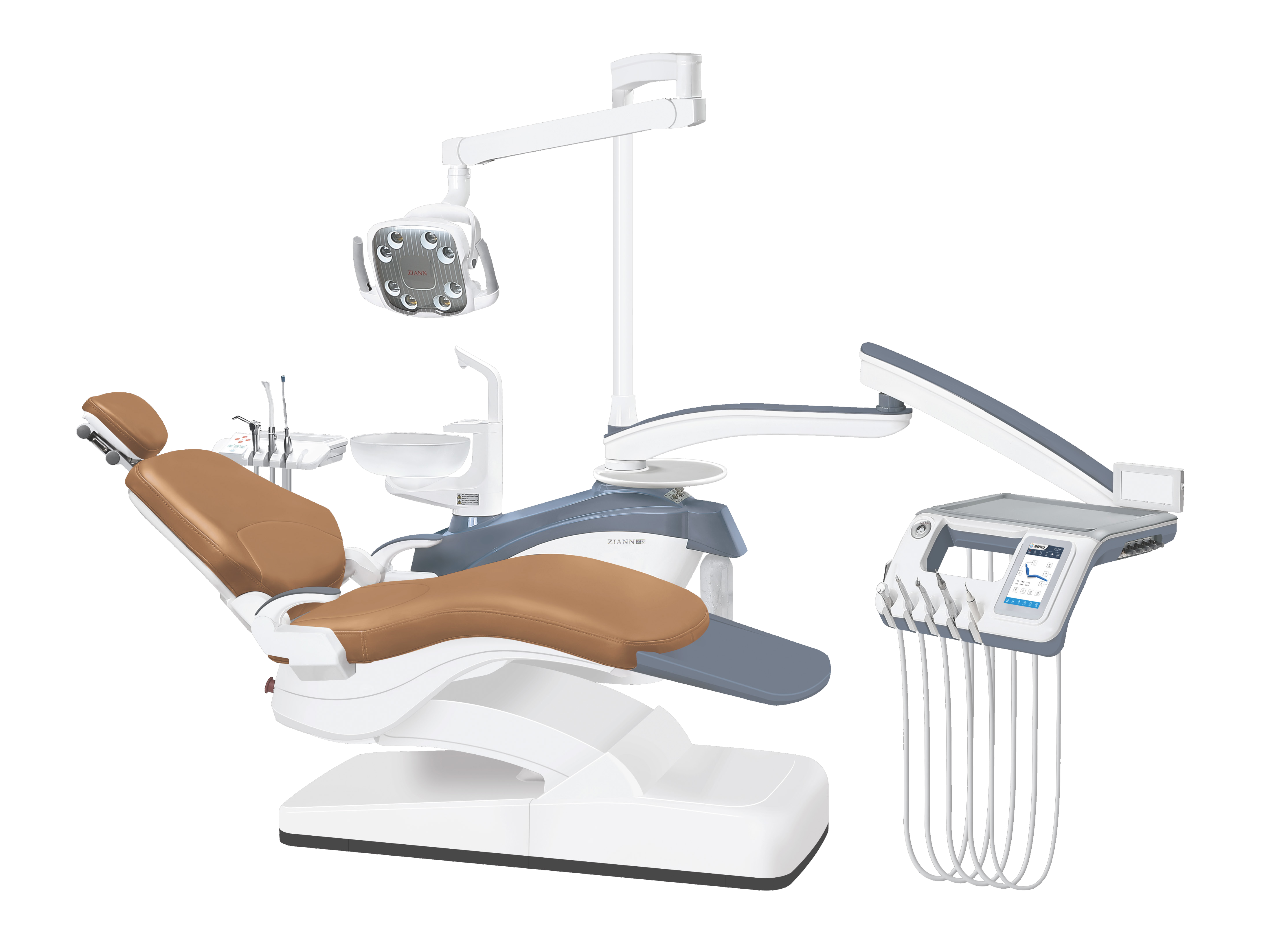When investing in a dental chair unit, whether for a newly established dental clinic or an upgrade to an existing practice, understanding the dental chair unit specifications is crucial. The dental chair unit is the centerpiece of any dental operatory, affecting not only the comfort and efficiency of dental procedures but also the overall patient experience.
Why Dental Chair Unit Specifications Matter?
A dental chair unit combines multiple functionalities—seating, lighting, instrument control, and sometimes even digital integration—into one system. Choosing a unit that aligns with your clinical needs, budget, and workspace can optimize workflow, reduce practitioner fatigue, and improve patient satisfaction.
Without a clear grasp of the dental chair unit specifications, buyers risk investing in a unit that either underperforms or includes unnecessary features, leading to wasted resources and compromised care quality.
Core Components of a Dental Chair Unit
A typical dental chair unit includes several integrated dental chair unit parts:
● Dental Chair
● Delivery System
● Operating Light
● Cuspidor and Spittoon
● Control Panel
● Assistant’s Arm and Instruments
Each part has its own set of specifications to evaluate and ensure it meets your practice requirements.
Ergonomic Dental Unit for Sale
Key Specifications to Consider
1. Chair Ergonomics and Comfort
The dental chair must offer optimal support and adjustability to accommodate patients of all sizes and conditions. Key factors include:
Adjustable Backrest and Seat: Look for a chair that allows smooth transition between upright, reclined, and supine positions with minimal noise and effort.
Weight Capacity: Most dental chairs support 300-450 pounds, but practices serving bariatric patients need higher capacity models.
Padding and Upholstery: High-density foam cushions with antimicrobial, stain-resistant upholstery improve hygiene and patient comfort.
Headrest Design: A fully adjustable, multi-axis headrest enables better patient positioning and access for the dentist.
2. Delivery System
The delivery system holds and powers the dental handpieces and accessories. Buyers should check:
Number of Handpiece Connections: Most units support 3-5 handpieces including high-speed, low-speed, air/water syringe, and scaler.
Tubing Length and Flexibility: Longer, flexible tubing enhances maneuverability around the patient.
Type of Control: Foot control pedals vs. touchpad control impact usability and hygiene.
Instrument Integration: Some units allow easy integration with ultrasonic scalers, curing lights, and even electric motors.
3. Operating Light Specifications
Proper illumination is essential for detailed dental work:
Light Intensity: Measured in lux or foot-candles, good dental lights provide adjustable brightness from 10,000 to 50,000 lux.
Color Temperature: Optimal lighting mimics daylight (~5,000-6,500 Kelvin) to provide true color rendering.
Shadow Reduction: Multiple LED arrays or articulated arms help minimize shadows on the treatment area.
Heat Emission: LED lights produce less heat than halogen, improving patient comfort.
4. Control Systems and User Interface
Modern dental chairs often include sophisticated control systems:
Programmable Memory Settings: Save and recall favorite chair positions to speed up routine adjustments.
Touchscreen Panels: Provide intuitive control over chair, light, and instruments.
Wireless Options: Some units offer remote or wireless control pads for better workflow flexibility.
Ease of Cleaning: Controls should be sealed and smooth to maintain infection control.
5. Cuspidor and Spittoon Features
The cuspidor allows patients to rinse and spit during procedures:
Material and Hygiene: Porcelain and stainless steel options are durable and easy to clean.
Water Supply and Drainage: Integrated water lines for flushing and quick drainage systems are vital.
Removability: Detachable bowls simplify cleaning and sterilization.
6. Assistant’s Arm and Accessories
A well-designed assistant’s arm improves efficiency:
Instrument Placement: The assistant’s arm should provide easy access to suction, air/water syringe, and other tools.
Ergonomic Design: Smooth movement and adjustable height reduce strain during procedures.
Integrated Syringe and Suction Controls: Controls on the arm improve assistant autonomy.
Additional Features to Consider
Infection Control
In today’s healthcare environment, infection control is non-negotiable. Features such as:
Autoclavable Handpiece Tubing: Tubing that withstands sterilization cycles.
Self-Contained Water Systems: Reduce contamination risk from municipal water supplies.
Anti-Microbial Coatings: Upholstery and control surfaces treated to minimize bacterial growth.
Technology Integration
Advanced dental chair units may include:
Digital Imaging Integration: Mounts or ports for intraoral cameras and digital sensors.
Wireless Connectivity: For syncing with patient management software.
Built-In Communication Systems: Microphones or speakers for hands-free communication.
Space and Installation Requirements
Footprint Size: Measure your operatory space to ensure the chair unit fits comfortably without overcrowding.
Power and Water Supply: Verify electrical voltage and plumbing compatibility.
Mobility: Some units offer movable bases for multi-room flexibility.
Understanding Dental Chair Unit Price
The dental chair unit price varies widely depending on brand, specifications, and included features. Basic models with standard functions will be more affordable, while high-end units with advanced technology, ergonomic designs, and digital integrations command a premium. When evaluating price, consider long-term value, warranty, and service plans from reputable dental chair unit companies.
Choosing the Right Dental Chair Unit Company
Selecting a reliable dental chair unit company is as important as choosing the right unit itself. One such reputable company is Ziann, which offers a wide range of dental chair units featuring advanced ergonomic designs, reliable components, and competitive dental chair unit prices. Ziann’s commitment to integrating the latest technology with user-friendly controls makes them a preferred choice among dental professionals worldwide. Choosing a reliable dental chair unit company like Ziann ensures that your investment is supported by excellent after-sales service and durable products.
Dental Chair Unit Manufacturer
FAQs about Dental Chair Unit
Q1: What are the most important dental chair unit specifications to consider before buying?
A1: Key specifications include chair ergonomics (adjustability and comfort), delivery system capacity, operating light intensity, control system usability, infection control features, and the overall footprint to fit your workspace.
Q2: How does the dental chair unit price vary, and what affects it?
A2: Prices vary based on brand reputation, included features (like digital integration and programmable controls), build quality, and after-sales support. Basic models are more affordable, while premium models with advanced tech cost more.
Q3: What are the essential dental chair unit parts I should be aware of?
A3: Essential parts include the chair itself, delivery system (handpieces and controls), operating light, cuspidor/spittoon, control panel, and assistant’s arm. Each affects functionality and workflow.
Q4: How can I choose a trustworthy dental chair unit company?
A4: Look for companies with a solid track record, positive user reviews, warranty coverage, reliable customer service, and options for product demonstrations. Brands like Ziann are well-regarded in the industry.
Q5: Are there specific infection control features I should look for?
A5: Yes. Features like autoclavable tubing, self-contained water systems, antimicrobial upholstery, and easy-to-clean control panels are crucial for maintaining high hygiene standards.
Q6: Can dental chair units be upgraded in the future?
A6: Many units offer modular designs allowing upgrades such as additional handpieces, digital integration, or improved lighting. It’s wise to choose a model that supports future enhancements.
Conclusion
Understanding dental chair unit specifications empowers you to make informed decisions that enhance clinical efficiency, patient comfort, and long-term value. From ergonomics to technology integration, every detail matters in creating an optimal dental operatory environment. Careful evaluation ensures you select a dental chair unit that supports both your professional needs and your patients’ well-being.
Contact Ziann to explore how we can integrate our dental chair units into your project.


